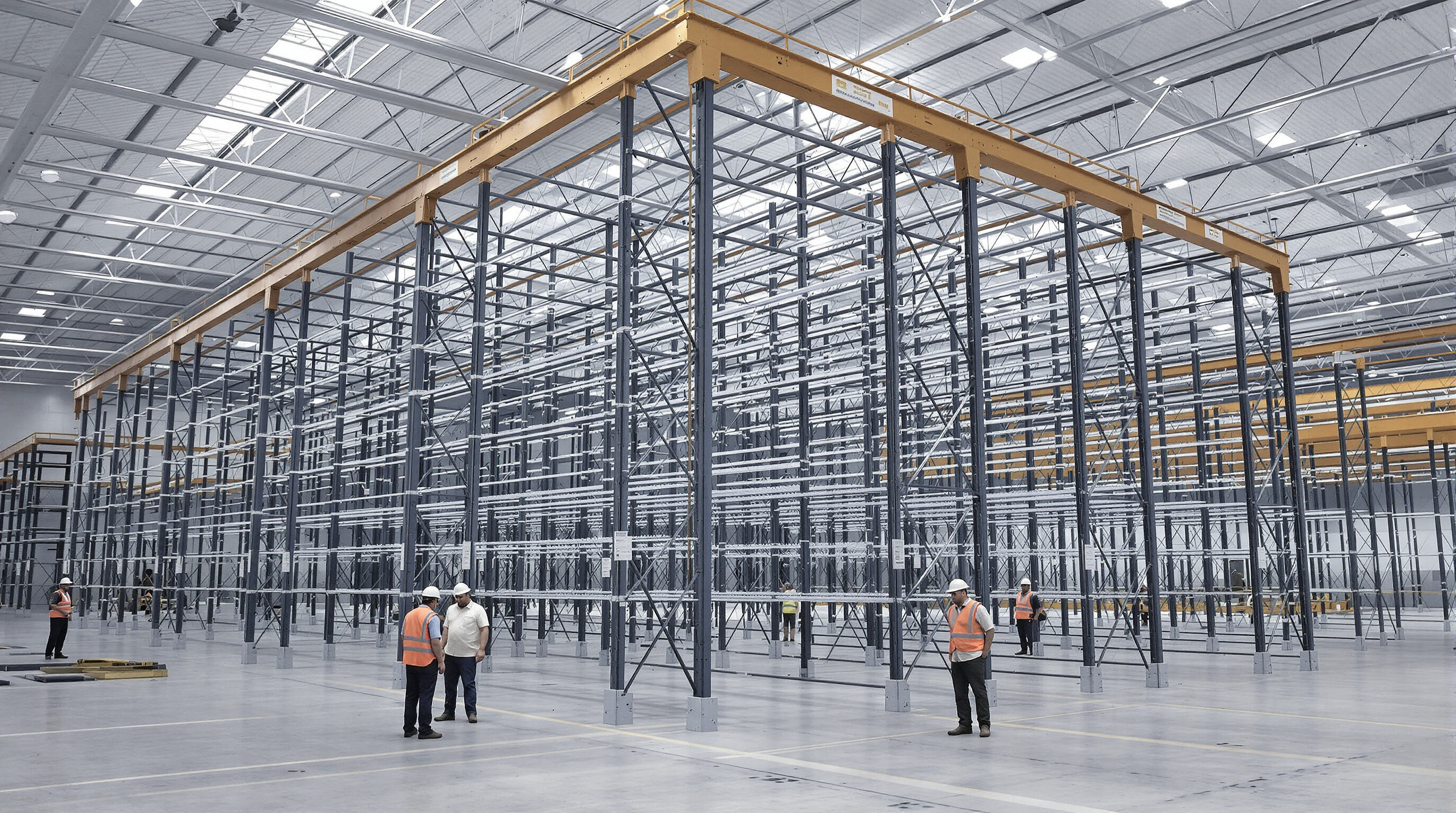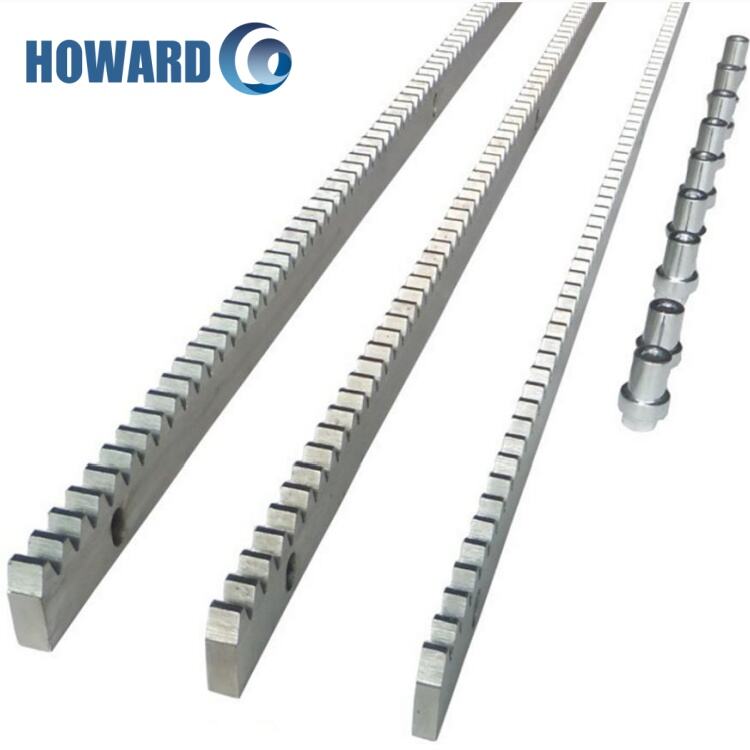The Rise of Custom Steel Rack Solutions in Modern Warehousing
From Standard to Custom Steel Rack Design: A Market Shift
The old school approach of standard steel racks just doesn't cut it anymore in today's warehouses. According to recent research from the Material Handling Institute, there's been almost double growth in custom rack installations over the past five years. Why? Because inventory sizes keep getting all over the place these days, plus more facilities are bringing automation into their operations. Most top shelf manufacturers have shifted toward modular setups that let workers adjust beam spacing between 3 to 12 inches as needed. These racks also come with specific weight distribution features that really matter when working alongside robots and those self-driving AGV carts around the warehouse floor.
The Role of Industrial Demand in Advancing Custom Steel Shelving
The automotive and aerospace sectors are really driving innovation in steel rack design these days. They need robust systems that can handle heavy weights ranging from 8 to 12 tons when it comes to engine blocks and other critical components. For parts that require special handling, manufacturers insist on non-abrasive surface treatments to avoid any scratches or damage during storage. The racks themselves must be easy to modify too, with most setups allowing adjustments within around 15 minutes at most. With just-in-time production becoming standard practice across many factories, there's growing emphasis on materials that resist corrosion while maintaining performance even when temperatures swing up and down throughout the day.
Key Data: 68% of Warehouses Now Prioritize Customization Over Off-the-Shelf Racks
Recent surveys (2023) show that 42% of product damage incidents originate from mismatched standard racks, compared to just 6% in facilities using custom shelving. Warehouses with tailored solutions achieve significant performance gains:
| Metric | Standard Racks | Custom Racks |
|---|---|---|
| Vertical space utilization | 68% | 94% |
| Inventory retrieval speed | 22 mins/pallet | 9 mins/pallet |
These metrics confirm that custom steel racks are now seen as essential infrastructure, not optional upgrades.
Load Capacity and Stress Distribution in Steel Shelf and Rack Construction

Advanced structural engineering ensures optimal load distribution in modern steel racks. Triangular bracing reduces lateral deflection by up to 40% compared to conventional designs (ASCE 2023), while computer-aided finite element analysis (FEA) identifies stress concentrations in support beams. Critical design elements include:
- Direct vertical load paths to reinforced floor anchors
- Beams engineered to handle asymmetric loading common in FIFO operations
- Seismic reinforcements exceeding ASCE 7-22 standards in high-risk zones
Material Selection for Shipping Racks: Balancing Strength and Weight
High-strength ASTM A572 steel (50 KSI yield strength) has become the industry benchmark for uprights, offering 22% greater durability than A36 steel while maintaining weldability. Industry analysis confirms that 12-gauge steel crossbars with powder-coated finishes resist 25% more impact damage in demanding distribution environments.
| Material Property | Shipping Rack Requirement | Test Standard |
|---|---|---|
| Yield Strength | ≥ 50 KSI | ASTM E8 |
| Hardness | 80–85 HRB | ASTM E18 |
| Coating Adhesion | 4B Classification | ASTM D3359 |
Welded vs. Bolted Steel Rack Joints in High-Stress Environments
Welded joints offer 15–20% higher load capacity in static applications, but bolted connections dominate dynamic warehouse settings due to reconfigurability. A 2023 Material Handling Institute study found:
- Bolted Racks: 92% faster reconfiguration during SKU changes
- Welded Racks: 38% lower maintenance costs over a 10-year lifespan
High-strength A325 bolts with locknut designs now achieve 85% of the rigidity of welded joints under ANSI MH16.1-2023 vibration testing protocols, making them viable for many high-stress applications.
Compliance with OSHA and ANSI Standards in Custom Industrial Shelving System Design
All custom rack designs must adhere to ANSI MH16.1-2023 guidelines for:
- Minimum safety factors (1.5× rated load capacity)
- Seismic zone-specific baseplate requirements
- Progressive collapse prevention via redundant load paths
OSHA 29 CFR 1910.176(b) requires visible load rating plates and annual inspections for racks supporting over 5,000 lbs. Third-party certification to ISO 21944:2021 ensures compliance for global manufacturing and export operations.
Custom vs. Standard Steel Racks: Flexibility, ROI, and Real-World Impact
Customization vs. Standard Rack Solutions in Dynamic Supply Chains
According to Material Handling Institute data from 2023, around three quarters of manufacturers deal with constant changes in product size and weight requirements. This reality makes flexibility absolutely essential for storage solutions. Custom built steel racks can be configured in ways that grow alongside business operations, something traditional fixed systems simply cannot match. Sure, those off the shelf rack options might save about 15 to maybe 20 percent upfront, but companies tend to end up spending roughly 35 percent more down the road when their operations change again and again. Retrofitting becomes necessary or complete replacements happen far too frequently in these unpredictable manufacturing settings.
Case Study: Automotive Parts Supplier Reduces Damage by 42% Using Custom Steel Shipping Racks
A Tier 1 automotive supplier eliminated $2.7M in annual losses by replacing standard racks with load-specific steel designs. Engineered compartments prevented part-on-part contact, while adjustable crossbars accommodated 12 transmission models. Results included:
| Metric | Standard Racks | Custom Steel Racks | Improvement |
|---|---|---|---|
| Damage Rate | 9.2% | 5.3% | 42% ⬇ |
| Storage Density | 8 units/m² | 11 units/m² | 38% ⬆ |
| Reconfiguration Time | 4.5 hours | 1.2 hours | 73% ⬇ |
Long-Term Cost Analysis: Durable, Long-Lasting Storage Materials Reduce Replacement Cycles
Industrial tests show galvanized steel racks last about 25 years before needing replacement, which beats most generic options that typically last between 8 to 12 years. While these specialized racks cost more initially, their long lifespan actually saves money in the long run. Studies indicate facilities can cut down on overall expenses by around 35% over just five years when switching from standard racks to these durable alternatives. Warehouse managers who made the switch tell us they experience roughly 60% fewer unexpected breakdowns too. The reason? Those strong welded connections don't tend to come loose even after months of constant vibration from machinery and forklift traffic, something regular racks struggle with over time.
Maximizing Space and Protection with Modular and Tailored Steel Rack Systems
Space-Saving Storage Racks: Maximizing Vertical and Horizontal Efficiency
Steel rack systems today make great use of both vertical and horizontal space, turning those awkward, wasted layouts into much denser storage areas. The modular panels really come in handy for odd-shaped spaces too. Facilities that customized their setup actually got back about 22% of floor space they couldn't use before according to IWLA's 2023 report. When looking at vertical storage options, heavy duty cantilever racks can handle stacking pallets as high as 18 feet off the ground. These systems still keep that required 3 foot gap between each level as mandated by OSHA regulations, so safety isn't compromised even when maximizing height.
Utilizing Vertical Space with Adjustable Shelf Configurations
Height-adjustable shelving supports seasonal inventory shifts without structural overhauls. Snap-in crossbeams allow 1" increments, enabling a single rack to store 55-gallon drums in Q1 and sensitive electronics by Q3. Top-tier operations enhance this flexibility with RFID-enabled load monitors that track real-time weight distribution across shelf levels.
Engineering Custom Racks for Sensitive or Heavy-Duty Equipment
Specialized steel racks address extreme storage needs—from vibration-sensitive lab instruments to 8-ton industrial dies. For precision tools, powder-coated racks incorporate:
- Neoprene-lined shelf channels (0.5 mm vibration dampening)
- Seismic-rated cross-bracing (withstands 0.3g lateral forces)
Heavy-duty variants use 10-gauge steel reinforcements and dual-angle load stabilizers tested to 150% of rated capacity.
Impact Resistance and Vibration Dampening in Steel Rack Design
Industrial racks now integrate automotive-inspired impact protection. Energy-absorbing corner guards dissipate 67% of forklift impact force through deformable steel composites, reducing annual rack replacement costs by $18k in high-traffic distribution centers. Simultaneously, tuned mass dampers in rack bases neutralize 82% of ground vibrations from conveyor systems (MHI 2024 Material Handling Report).
The Future of Steel Rack Customization: Smart, Sustainable, and Scalable
Smart Racks: Integrating IoT Sensors into Steel Shelving for Real-Time Monitoring
Steel racks aren't just static storage anymore thanks to built-in IoT sensors that turn them into smart storage hubs. These advanced systems keep track of stock levels, check for structural issues, and even monitor temperature and humidity conditions as they happen, cutting down on those tedious manual checks by about 40 percent. The real game changer comes when these systems send out early warnings before shelves get overloaded, something that happens all too often in busy warehouses and distribution centers. Companies running test programs with combined steel and digital systems reported nearly spot-on inventory counts at around 92% accuracy. What this shows is pretty clear: smart racks aren't just holding stuff anymore, they're connecting the physical world of warehouse management with the digital realm of supply chain analytics in ways we're only beginning to understand.
Customization in Metal Rack Packaging for E-Commerce and Just-in-Time Logistics
The never ending nature of e commerce means storage racks need to be able to change quickly when needed. Slot and tab systems make adjusting shelves super fast, which comes in handy during those crazy holiday rushes or sudden sale events. One big warehouse company actually cut down their order preparation time by around 28 percent after switching to racks that had built in packing areas plus those LIFO lanes everyone talks about. This kind of setup works really well with just in time manufacturing ideas we see in car factories too. There they use special racks so parts arrive exactly when the assembly line needs them, keeping pace with about 60 cars coming off the line every hour give or take depending on maintenance days.
Selecting Sustainable Metal Rack Solutions to Support Environmental Goals
More manufacturers are getting on board with circular economy approaches these days. Take steel racks for example - around seven out of ten new systems now include at least 30% recycled materials. Speaking of coatings, powder coating has become quite popular because it doesn't release those harmful VOCs while still standing up to corrosion just as well as traditional liquid paints do according to testing standards. And when it comes time to move things around, racks built with removable connections instead of welding can slash relocation carbon footprints by roughly two thirds. Production facilities certified under Energy Star standards tend to save about 18% in energy costs per ton produced compared to what's typical across the industry.
FAQ
Why are warehouses shifting to custom steel rack solutions?
Warehouses are transitioning to custom steel rack solutions due to increasing inventory complexities and the rise of automation. Custom racks offer modular setups with adjustable beam spacing and weight distribution features that are crucial for modern warehousing needs.
How does the automotive and aerospace industry influence steel rack design?
The automotive and aerospace sectors demand robust steel rack systems capable of handling heavy components, leading to innovations in rack design to meet these specific requirements, such as non-abrasive surface treatments and corrosion-resistant materials.
What are the benefits of using custom steel racks over standard racks?
Custom steel racks offer enhanced vertical space utilization, faster inventory retrieval, and reduced product damage compared to standard racks. They are essential for facilities requiring tailored storage solutions.
What role do IoT sensors play in modern steel rack systems?
IoT sensors transform steel racks into smart storage units by monitoring stock levels, structural integrity, and environmental conditions in real-time, enhancing efficiency and safety in warehousing operations.
Table of Contents
- The Rise of Custom Steel Rack Solutions in Modern Warehousing
- Load Capacity and Stress Distribution in Steel Shelf and Rack Construction
- Material Selection for Shipping Racks: Balancing Strength and Weight
- Welded vs. Bolted Steel Rack Joints in High-Stress Environments
- Compliance with OSHA and ANSI Standards in Custom Industrial Shelving System Design
- Custom vs. Standard Steel Racks: Flexibility, ROI, and Real-World Impact
- Maximizing Space and Protection with Modular and Tailored Steel Rack Systems
- The Future of Steel Rack Customization: Smart, Sustainable, and Scalable
- Smart Racks: Integrating IoT Sensors into Steel Shelving for Real-Time Monitoring
- Customization in Metal Rack Packaging for E-Commerce and Just-in-Time Logistics
- Selecting Sustainable Metal Rack Solutions to Support Environmental Goals
- FAQ




